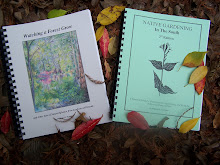one of North America's largest birds, an adult Bald Eagle can tip
the scales at nearly 10 lbs. and possess a wingspan approaching 7.5-feet
Toddy Guidry got these shots from the Bayou Black area during a recent Eagle Expo, a Bald Eagle celebration held in down in south Louisiana's St. Mary Parish each year.
Continent-wide, the Bald Eagle has been making a comeback over the past several decades – so much so, that it was taken off of the Endangered Species List back in 1995. The same holds true here in Louisiana, with steady increases in eagle sightings occurring statewide with each passing year. Louisiana annually hosts both the Northern and Southern subspecies of the Bald Eagle. Northern Bald Eagles nest far to our north, and visit Louisiana (mostly, the northern parishes) each winter. Southern Bald Eagles, on the other hand, actually nest throughout the U.S. Gulf Rim – including much of Louisiana – each winter, and spend their summer months far to our north.
Southern Bald Eagles show up in Louisiana each September, with breeding pairs often returning to the same nest site used in previous years. Young birds hatch in mid-winter, fledge from nests by March, and head north with their parents by April or May.
Bald Eagles are primarily fish-eaters.....
big birds need big nests....breeding pairs usually reuse the same nest,
refurbishing it each year.....older nests can weigh up to a ton....
The cypress swamps of southeastern Louisiana – Morgan City eastward through Houma to New Orleans – have traditionally served as our state's epicenter for nesting Southern Bald Eagles, with the areas of highest concentration usually focused around the large, shallow, “swamp lakes” where the fishing is best. Further west, the Atchafalaya Basin also holds lots of nesting eagles. More recently, nesting Southern Bald Eagles have been spreading nicely to most all points north and west, up through the Florida parishes north of New Orleans, and northward along the Mississippi River; and westward into the Mermentau River basin of southwestern Louisiana.





